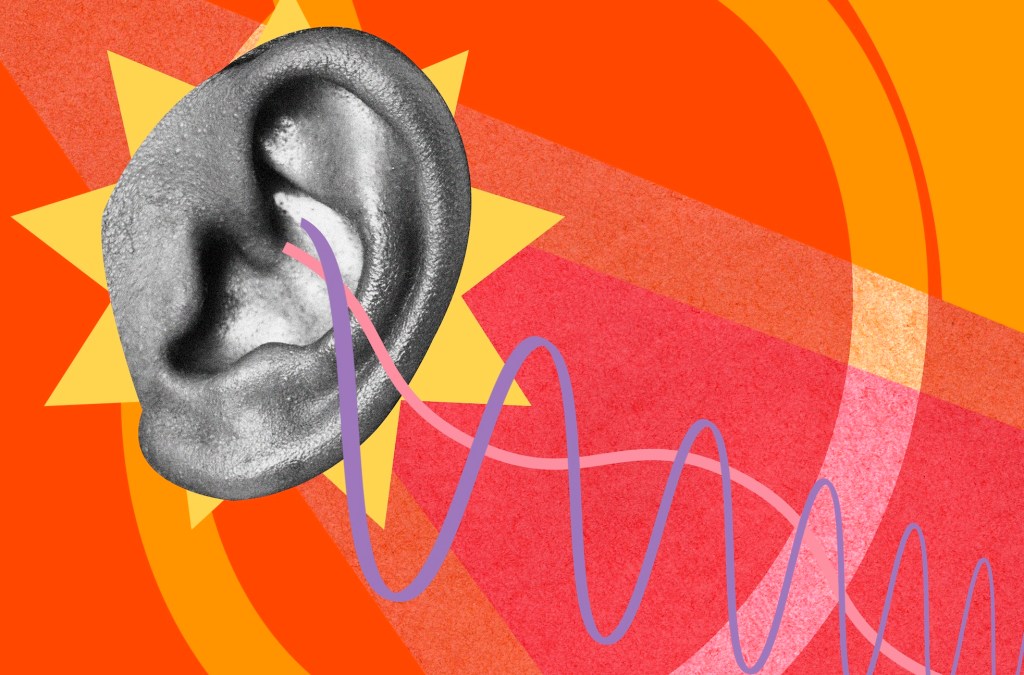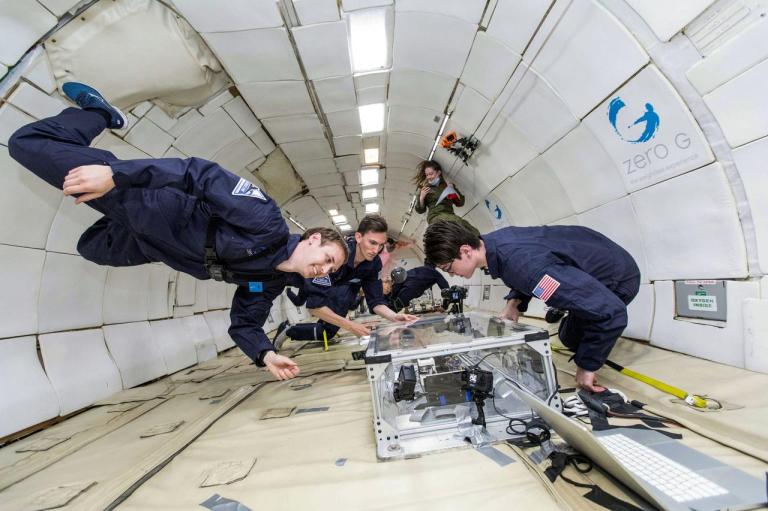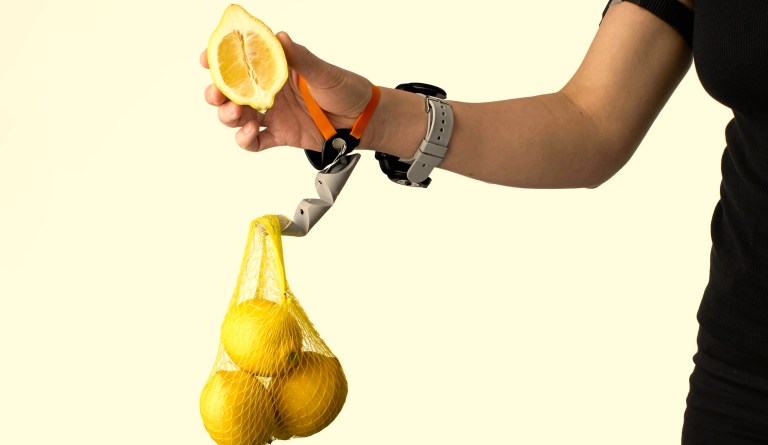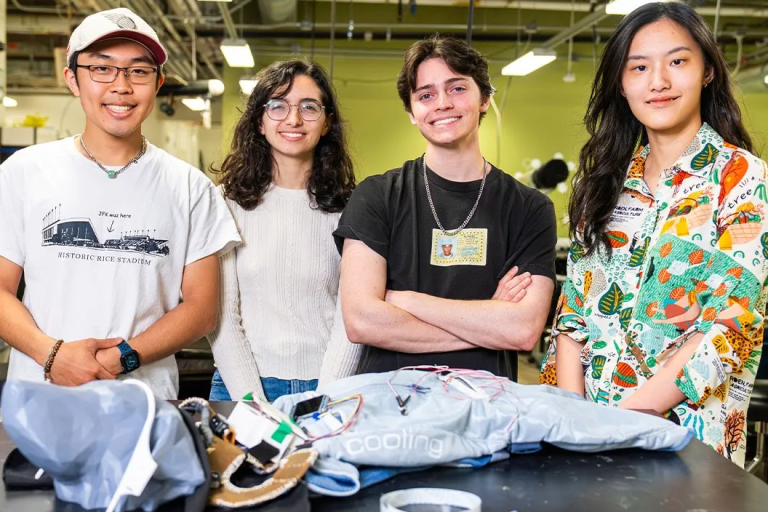Held annually by the Georgia Institute of Technology’s School of Music, the Guthman Musical Instrument Competition is a unique forum for some of the most cutting-edge developments in the field. It celebrates the ingenuity involved in designing and engineering brand-new instruments that represent the future of music.
“We live in an era where it’s really hard to come up with the next guitar or the next violin, because the tools for creating musical instruments are so accessible to everyone now,” Jason Freeman, the music school’s department chair, told Gizmodo.
This year, 10 finalists from five countries competed for $10,000 in prizes and showcased their inventions on March 8 and 9 at a hands-on music technology fair and concert at the university. Entries ranged from a tool for children that creates melodies from drawings, to a rubber cord- based instrument that allows users to augment their vocals in real time.
Advertisement
Freeman noted that while the competing creations are accessible and easy to use, “they still reward that deep engagement over time, so that your relationship with the instrument grows the more you invest in it,” adding: “To my mind, that’s what makes for an ideal instrument.”
VocalCords — First Place Winner
Coming in first place is VocalCords, a simple, manual instrument that allows users to modify their vocals in real time utilizing three rubber cords. By using their hands to influence their voice, an instrument in itself, users are replicating the relationship between touch and sound that other musical instruments provide.
“I would love for VocalCords to become a vessel for vocalists with varying degrees of performance experience and vocal comfort … empowering people to creatively explore and express themselves through their voices in ways they may not typically imagine otherwise,” said creator Max Addae, who hails from the United States.
Advertisement
Babel Table — Second Place Winner
Jean-François Laporte from Canada took second place with his invention, The Babel Table. It relies on multiple arrangements of latex membranes and compressed air to create an array of voice-like sounds, from deep and percussive to bright chirps that resemble birdsong.
The table was originally designed for a children’s project and was intended to catch kids’ attention and represent the various characters within the performance.
Thales — Third Place Winner
Italian inventor Nicola Privato created Thales — a pair of 3D-printed handheld controllers that resemble hockey pucks and contain an accelerometer, a gyroscope, and a magnetic sensor within each. Players can make music by moving the controllers over magnetic fields, and composers can design special music scores on surfaces containing magnets for use with the device — skip to 3:07 in the video above for a demonstration.
“Thales is a very cheap and easy-to-build instrument, and I think of this feature as an invitation for artists to build their versions and experiment with it,” Privato explained.
Sonograf — People’s Choice Award Winner
It’s no surprise that the Sonograf, created by the Spanish company Playmodes, took home the People’s Choice Award. The incredible instrument combines two creative fields — visual art and music — and it’s designed to help kids explore and learn about both. The tool works by capturing hand-drawn or collaged images and feeding the luminance data into a sound synthesizer to create music.
Advertisement
“We wanted to bring children an accessible and fun way of composing music through drawing and collage,” the company explained.
BodyMouth
BodyMouth is a unique invention that involves pairing body movements with vocal sounds, so that when a person moves in certain ways, the instrument “sings” or “speaks” like a human would.
“Being around other people who have obscure passions and are also undertaking wild and weird experiments, is pretty much why I went into being an artist in the first place,” said Kat Mustatea, who created the piece with fellow American Yonatan Rozin.
Watch the BodyMouth in action during a live performance at 1:28 in the above video.
Bone Conductive Instrument (BCI)
Pippa Kelmenson, another U.S. entrant, had a deeply personal motivation for developing the Bone Conductive Instrument, or BCI.
“As a lifelong musician, technologist, and sound artist with hearing impairments and tinnitus, I have always looked for ways to add a tactile dimension to sound to create a dialogue with the body,” she said.
Advertisement
The instrument is designed to help users across the hearing spectrum experience musical sounds, and accomplishes this by wirelessly sending signals through the jaw that vibrate at the individual resonant frequencies of the body, each one corresponding to a different note.
Circle Guitar
This instrument takes the concept of electric guitar to a whole new level. Invented by U.K. resident Anthony Dickens, it bypasses some of the manual work involved in playing (as anyone who has mastered barre chords can attest to) and instead allows the user to rock out by simply pressing down lightly on the strings.
Said Dickens: “Using a programmable wheel to strum the strings, the player can push past the physical limitations of conventional guitar playing to create new kinds of guitar music.”
X.E.K.I.
Created by Orpheas Kofinakos, Herui Chen, and Peter Zhang, of the U.S., the eXpressive Electronic Keyboard Instrument, or X.E.K.I., encourages players to move their bodies while using it, thus incorporating more physical expression into the act of making music.
“We looked for additional ways to incorporate motion akin to traditional instruments in the playing and performance of digitally produced music as we found the devices most often used in this context do not focus on the role of body movements within musical expression,” the inventors explained.
Advertisement
The Lorentz Violin
The Lorentz Violin is an electromechanical instrument that relies on a spinning disk that players adjust with their hands to create sounds. Creator Thomas Coor, a student from the U.S., said he was inspired by the way in which organs — among the largest musical instruments in the world — generate sounds. While his violin is considerably smaller, it uses a similar yet simplified process.
“There is little more exciting to me than strange sounds, and little more satisfying than controlling them,” Coor said.
YUAN
A “data-driven instrument controller” created by U.S. composer Chi Wang, YUAN involves multiple devices equipped with motion detectors to allow performers to use touch to manipulate sounds in various manners.
“As a result of [the] instrument’s mutability, the composer can reimagine the sonic world with different combinations of YUAN,” Wang elaborated. “Performers can engage the instrument via capacitive touches, brightness changes, and motion detective movements.”
Advertisement
Share to:











